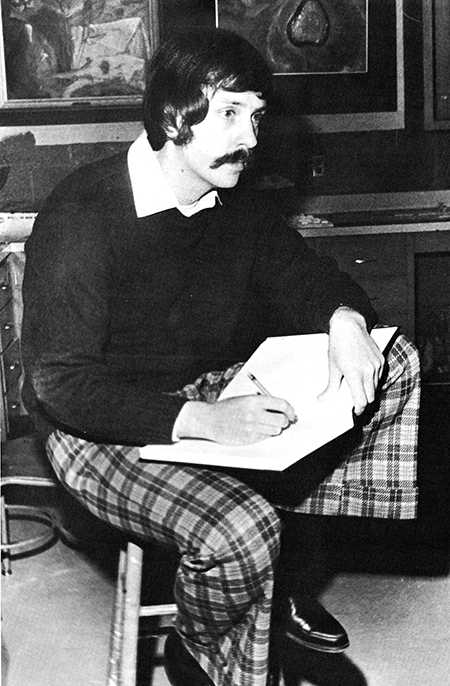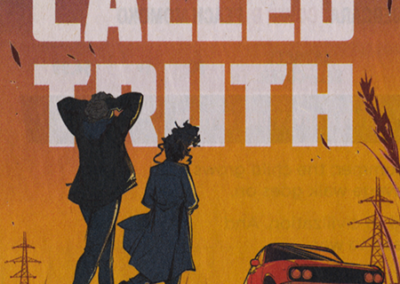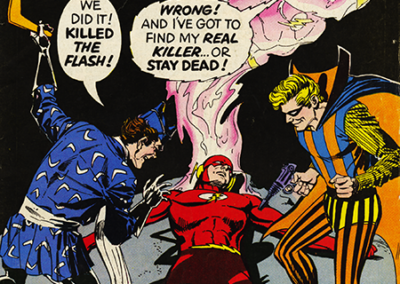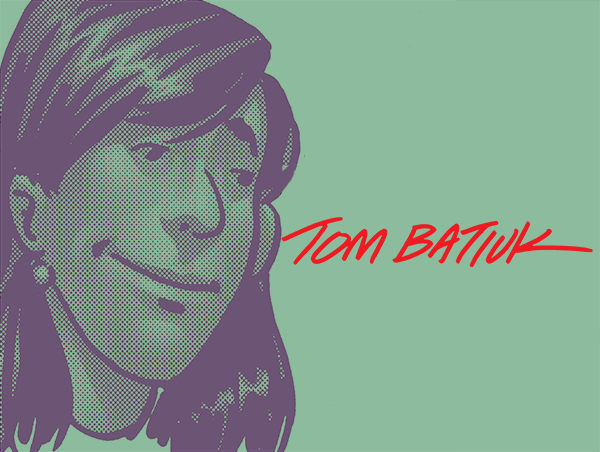For the first few weeks of work on Funky, I was sending pencil roughs to the syndicate to get them approved before turning them into strips. I finally asked how long I had to keep doing that and was told that I could stop it whenever I felt comfortable. So, feeling comfortable, I stopped. However, I wasn’t without my resources. I would get together with Cathy and my parents for sessions where I’d preview material to cull the best work. Cathy was always there as a sounding board, and she also affected the work in more subtle ways. Countless times over the years an article would slide across the breakfast table accompanied by the words, “You should read this.” She never let me get away with anything too easy for too long, and her gentle influence over the years has been profound. Publisher- Hall’s editorial stance was extremely laissez-faire when it came to my work. Maybe it was something I said—I don’t know. But Funky was successful, so they left me alone. Other than the obvious things—like the fact that I couldn’t spell banana to save my life (the only reason I did just now was because of the spell-checker on my laptop)—there wasn’t really any editing being done on my work. Whenever they saw the word banana, they had carte blanche to fix it, but otherwise, for the first dozen or so years, I was my own de facto editor. When the opportunity arose for me to codify that editorial control in my contract, I did.
This volume includes the first three years of Funky Winkerbean. I think it’s appropriate to say a few words about what you’ll find here.
Starting a comic strip is a unique proposition that requires a slightly different skill set from the one you’ll hopefully be using a few years later. When I was just beginning with Funky, I read a Peanuts strip that completely frustrated me. The strip in question had come after a week during which Linus had had his blanket taken away, and he was lying on the ground shaking as he went through withdrawal. In the second panel, Snoopy walks up wearing his WWI flying helmet and scarf. He pauses to look down at Linus shaking on the ground and then walks off saying, “Poor blighter, his kind shouldn’t be sent to the front.” It was an elegant strip that Schulz had taken twenty years to set up. Twenty years in which he had developed the theme of Linus and his blanket, developed the character of Snoopy and Snoopy’s fantasy world as a fighter pilot in WWI—all so he could create the opportunity to eventually dovetail them into that one perfect strip. Twenty years that I didn’t have behind me in those first few weeks of Funky.
Instead, what you have in a beginning strip is a great deal of expository dialogue trying to establish your characters’ names, personalities, and situations. Oh, and have them say something funny. I’ve often likened it to a stand-up comic who has to win over new audiences each night with a series of individual jokes. Later, if he’s lucky, he moves on to a sitcom where the situational humor allows him to extend the comic narrative. Finally, if he’s really lucky, he gets to make movies, where there’s room for the subtleties of behavioral humor. It takes a long time to establish your characters and develop their personalities. The flip side of the coin is that, once established, the half-life of those ideas is right up there with plutonium. Les hasn’t been behind the machine gun at his hall monitor’s post in decades, but people will still mention it as if I had drawn him there yesterday.
*From the introduction to The Complete funky Winkerbean Volume One






